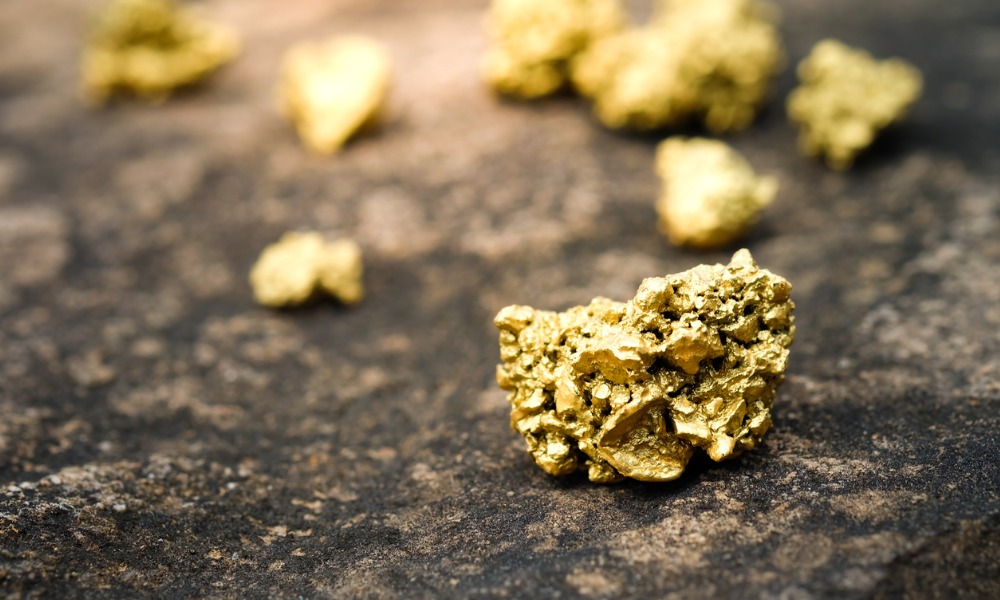Year in review: pandemic caused investors to flock to the traditional safe haven for security – but can gold climb even higher in 2021?

As the pandemic wreaked havoc on the market, investors turned to an old security blanket: gold. Despite a few dips, the price of gold climbed steadily during 2020 and reached a new all-time high of US$2,070.50 per ounce in early August. While the price has retreated a bit since then, gold’s performance this year has been impressive and has at least one expert bullish on its outlook for 2021.
“Back in January, I probably wouldn’t have talked at all about the virus – we were more concerned about overvaluations in both the stock and bond markets,” says David MacNicol, president and portfolio manager at MacNicol & Associates Asset Management, who describes his firm as “big believers” in precious metals, including gold. “In January, we prepared for overvalued markets by owning precious metals, alternative assets and allocations to cash. Then the virus hit North America in March, everything got shut down, and that’s when gold and other precious metals got a stronger bid.”
MacNicol has been a proponent of gold for years, noting that investors tend to turn to hard assets during turbulent times.
“Gold typically only does well in an inflationary environment, and you can argue there has been little to no inflation for decades,” he says. “We would argue gold has worked through this period because interest rates are low, even negative in parts of the world. Gold used to be chastised as something that didn’t produce income, but with low/negative rates, suddenly it makes more sense to hold it again.”
MacNicol adds that there some instances where gold can provide income, such as by holding mining companies that pay a dividend. That was the case in 2020, when mining companies’ cost of capital was well below what they could sell the commodity for – and that expands when the price of gold rises.
“Gold is backed up by 4,000 years of mankind believing in having a hard asset for an exchange of value,” MacNicol says. “Year-to-date, the spot price is up 26%, and futures are up around the same. The Gold BUGS Index [HUI], an index of companies involved in gold mining, is up over 32%, and that’s because miners and public companies tend to be more highly levered to the price of gold.”
MacNicol says he wasn’t surprised by the sharp increase in the price of gold this year. “I did an article earlier this year and said my target was $2,000, which many would have scoffed at in January,” he says. “We forecasted that and higher prices going forward. I think we are in the early stages in a bull market for precious metals – I’d rather it not be, and that the general economy was stronger and there wasn’t a pandemic. Then there wouldn’t be the same interest in gold, and we’d be happier investing in commercial companies. Until we get back to standards like that and governments find a way to manage their debt and deficit levels, we will be talking about gold.”
MacNicol says it’s still too early to tell how much of the rise in gold prices can be attributed to the pandemic versus other factors like the overvaluations witnessed at the beginning of the year. Yet he does believe that people have approached the precious metal much as they have during previous crises.
“People always come back to gold being a store of value,” he says. “It is inflation-proof – we are seeing evidence of inflation on the horizon, and that will further fuel gold.”
One trend that’s new to this crisis, however, is a move toward cryptocurrencies. While they might not be taking the cut out of the gold market that some crypto advocates would like, MacNicol does see both assets playing similar roles for investors.
“You have different users and types of investors for each asset class,” he says. “Institutions can readily invest in gold, both the commodity and miners through publicly traded companies. Crypto is a little more challenging, but it is a different market. In five to 10 years, I think it might become more homogenized, where cryptos will be more accepted [and] more exchangeable, but gold will still be there, and it will probably be easier to invest in the physical commodity.”
Heading into 2021, MacNicol is still bullish on gold and believes the highs reached in 2020 are only the beginning.
“While gold has taken a momentary setback here in October, I see $2,000 again on the horizon,” he says. “The timing I can never answer, but I think in the future, it will surpass $2,000 and the previous highs. After that, I think it’s on to the next level, which would be $2,500. That’s probably as high as I’ll say right now. How long this bull market goes on is anyone’s guess, but you are probably looking at a long run for gold.”



